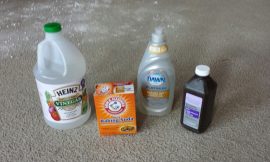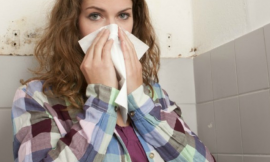
Did you know that the average person spends about 25 hours a year cleaning their kitchen? That’s a significant chunk of time! What if you could clean your kitchen effectively, using eco-friendly products that are safe for both your family and the planet? In this guide, we will explore the ins and outs of green cleaning your kitchen. From natural cleaning solutions to sustainable practices, we’ve got you covered! Let’s embark on this journey toward a cleaner, greener kitchen together!
Why Choose Green Cleaning for Your Kitchen?
When it comes to keeping your kitchen spotless, have you ever considered the benefits of green cleaning? Using eco-friendly cleaning methods not only helps the environment but also creates a healthier space for your family. Traditional cleaners can have a significant environmental impact, contributing to water pollution and harmful waste. By choosing green cleaning products, you’re reducing the chemical load on our planet.
And let’s not forget about health benefits! Many conventional cleaners contain harsh chemicals that can affect indoor air quality and pose risks to your family’s health. Green cleaning options typically avoid these harmful substances, making your kitchen a safer place to cook and gather.
Essential Tools for Green Kitchen Cleaning
Let’s dive into the tools that make green cleaning effective and sustainable. Reusable cleaning tools like microfiber cloths and washable mop heads can significantly reduce your waste compared to keeping a stock of single-use products. Eco-friendly cloths are not only better for the environment, but they also tend to be more effective at trapping dirt and germs.
Speaking of tools, have you considered the impact of your scrub brushes? Opting for sustainable scrub brushes made from bamboo or recycled materials can contribute to a greener cleaning routine. It’s an easy switch that makes a big difference in reducing plastic waste!
Homemade Green Cleaning Solutions
Creating your own green cleaning solutions is easier than you might think. Simple recipes can be incredibly effective—mixing baking soda with vinegar can tackle tough grime, while essential oils can add a pleasant scent to your space. For example, combining water, vinegar, and a few drops of tea tree oil makes a powerful disinfectant.
The benefits of using common household ingredients such as vinegar and baking soda are numerous. They are non-toxic, effective, and often cheaper than store-bought cleaners. However, always remember some safety tips: store your mixtures in clearly labeled containers, keep them out of reach of children, and never mix vinegar with bleach, as this can release toxic fumes.
Cleaning Tasks: Step-by-Step Guide
Now, let’s move on to practical application. For effectively cleaning kitchen surfaces, start by decluttering your space. Use your homemade cleaner and a reusable cloth to wipe down countertops, ensuring you reach all the nooks and crannies. For sanitizing kitchen appliances, a mixture of water and vinegar can work wonders on both exterior and interior surfaces, effectively eliminating germs without harsh chemicals.
And what about those stubborn stains? Fear not! Green strategies such as using a paste of baking soda and water can work miracles on tough spots. Apply it to the stain, let it sit for a few minutes, and scrub gently with a sustainable brush. You’ll be amazed at how easily those stains come off.
Reducing Waste During Your Cleaning Routine
As you clean, consider how to minimize waste. Techniques like using cloths instead of paper towels can drastically reduce the number of single-use products you go through. Additionally, think about composting any kitchen waste like fruit scraps—this not only reduces trash but also supports your garden or local composting efforts.
When it comes to recycling, remember that many cleaning supplies come in recyclable containers. Always check your local recycling guidelines to ensure you’re disposing of items properly and minimizing your environmental footprint.
Maintenance: Keeping Your Kitchen Green Long-Term
To maintain a clean kitchen with eco-friendly practices, develop daily habits that support your green routine. Simple changes like wiping down surfaces with a green cleaner after each use keeps germs at bay and makes cleaning less daunting in the long run.
Incorporating eco-friendly products for regular use is another way to support your green kitchen. For example, look for cleaning supplies with minimal packaging or made from sustainable materials.
Finally, having a checklist for seasonal deep cleaning can help keep your efforts organized and efficient. Regular decluttering and thorough cleaning will not only enhance the cleanliness of your kitchen but also strengthen your commitment to a healthier planet!
Conclusion
In summary, green cleaning your kitchen is not just about using the right products; it’s also about adopting sustainable practices that protect health and the environment. Make the transition today and experience the pleasant transformation in your kitchen! Start incorporating these techniques and products for a cleaner, healthier living space. Join the green cleaning revolution!







